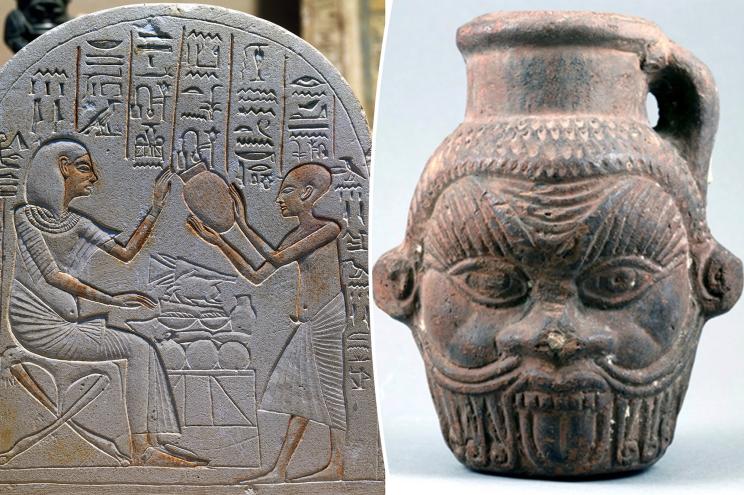Bottoms up for Bes.
Ancient Egyptians got their ritualistic jollies on a concoction containing a mixture of fruits, nuts, psychedelics, bodily fluids and alcohol, according to new archaeological findings published in Scientific Reports this month.
In an archaeological first, scientists have scraped the organic residue within a 2,000-year-old head-shaped drinking vessel, called a Bes mug, to identify its past contents — using a new technique developed by researchers at the University of South Florida, in collaboration with partners at the Universities of Trieste and Milan in Italy
“There’s no research out there that has ever found what we found in this study,” USF researcher Davide Tanasi said in a statement per Science Daily. “For the first time, we were able to identify all the chemical signatures of the components of the liquid concoction contained in the Tampa Museum of Art’s Bes mug, including the plants used by Egyptians, all of which have psychotropic and medicinal properties.”
The mixture of hallucinogens included in the recipe suggests the potion was used for magic rituals in Saqqara.
“Religion is one of the most fascinating and puzzling aspects of ancient civilizations,” Tanasi said. “With this study, we’ve found scientific proof that the Egyptian myths have some kind of truth and it helps us shed light on the poorly understood rituals that were likely carried out in the Bes Chambers in Saqqara, near the Great Pyramids at Giza.”
Researchers explained in the new study that Bes mugs celebrated the Egyptian god by the same name, depicted with big eyes, a wagging tongue, a tail and a crown of feathers, who they worshipped for fertility, healing and protection. The ceremonial ceramic vessels were used throughout Egypt between the 16th century BCE and the 5th century CE — such as the one included in the USF study which dates back to the Ptolemaic period (323 to 30 BCE).
The precise purpose of Bes mugs has long remained unclear, experts noted, as previous theries were based on long-told myths about Egyptian rituals.
“For a very long time now, Egyptologists have been speculating what mugs with the head of Bes could have been used for, and for what kind of beverage, like sacred water, milk, wine or beer,” said Branko van Oppen, curator of Greek and Roman art at the Tampa Museum of Art, who reportedly reviewed the study. “Experts did not know if these mugs were used in daily life, for religious purposes or in magic rituals.”
Their analysis of the Bes mug revealed traces of honey, sesame seeds, pine nuts, licorice and grapes, alongside ingredients to produce altered states, including hallucinogenic substances and alcohol. This led Tanasi to believe the mug was previously used in a magical ritual to make contact with the life-affirming deity.
“This research teaches us about magic rituals in the Greco-Roman period in Egypt,” Van Oppen continued. “Egyptologists believe that people visited the so-called Bes Chambers at Saqqara when they wished to confirm a successful pregnancy because pregnancies in the ancient world were fraught with dangers. So, this combination of ingredients may have been used in a dream-vision inducing magic ritual within the context of this dangerous period of childbirth.”






